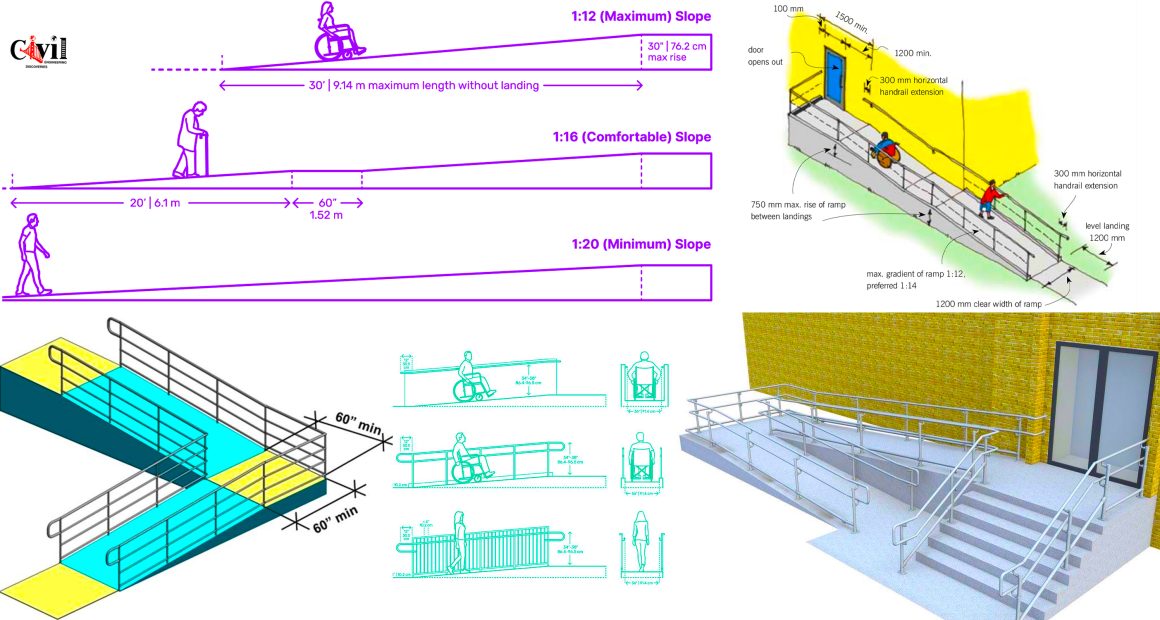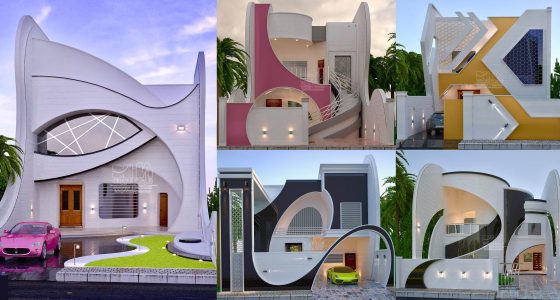Ramps are ramps used both inside and outside of buildings to provide access between vertical levels. Ramps provide an alternative to stairs for wheelchair users, those with mobility issues, and those with strollers, bicycles, and other wheeled items. The slope, slope, or slope of a ramp is the angular relationship between its rise (vertical height) and its horizontal projection or length (running), usually expressed as a scale. The increment can be set to one unit of one, so for example, a 1:20 slope means that as each dimensional unit of height increases or decreases, the length unit runs out by 20. Ramps that are too steep will be difficult for users and may even be unsafe, while ramps that are too shallow may require excessive length.
Design/engineering points about ramps
1- Built on a non-slip surface, 1200mm wide with 75mm racks on either side, handrails on one side (or both sides if the ramp is open on both sides), and flat/horizontal landing above bottom and bottom (minimum 1200mm x 1200mm) to enter and exit the ramp so that the person can safely turn and stop.
2- In general there is no steeper slope than 1:12, but a lighter slope is ideal and can be 1:14.
3- Can be made of wood or aluminum, and has a concrete landing pad leading to a walkway, etc.
4- The lower landing must be clearly visible for safe entry and exit and must not be terminated on public or shared land (e.g. ) the landing must not end directly in the hazardous driveway.
5- Any area that could pose a danger to those using a ramp, (for example) opening windows, faucets, water traps, drains or pipes, etc….
6-A ramp or descent must be avoided. Wings more than 1 meter above the ground will require building consent. This cost is included in the total cost of the ramp.
Click Here To See Important Information About Ramp And Stair Design With Details






































